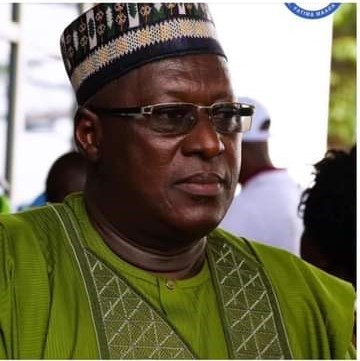Agriculture & poverty alleviation in Sierra Leone (1)
Formation of policies is paramount to the success of a given government’s programme. In a 2006 “Agriculture Sector Review” conducted by the Ministry of Agriculture in Bangladesh, there was this crucial aspect of poverty alleviation through agricultural development, which they said, was “the fundamental goal we seek to realize through efficient and equitable service delivery to the farmers. To be specific, we are interested in that aspect of governance that deals with the formulation of policies relating to various services to the farmers and their successful implementation at the local level.” (Read: Volume IV of “Agriculture Governance In Bangladesh: A Survey Of Six Thanas”). Successive policy formulation will ensure a successful implementation of a given programme.
Asia’s continuous growth is phenomenal and it is believed, that the “reduction in the incidence of rural poverty in Asia and the Pacific, though slow, was brought about through a combination of factors: (a) the slowing down of population growth, agricultural and overall economic growth which resulted in a rise in wages and employment; and (b) improvement in the levels of social development…” (See: Agro-chemicals News in Brief Special Issue, November 1999)
Sierra Leone has been making progress in a number of areas. The agriculture sector is one among several sectors through which the country has been progressing. As a matter of fact, agriculture is the bedrock of a nation’s growth and development. President Ernest Bai Koroma, during his 2009 Independence Day Speech, stated that his “government’s Agenda for Change draws its strength from this ability of Sierra Leoneans to effect change….” and this change was not just limited to the aspect of state governance and the development in the country’s infrastructural sector, or the energy aspect, or the health care of people, but also in agriculture. So, by 2010, during the ‘Business Bomba Competition Final’, President Koroma called on Sierra Leoneans to “raise production, productivity, and competitiveness in agriculture because it touches the lives of so many Sierra Leoneans.” Since then, the country has continued to make significant progress in the agriculture sector.
Statistics and facts as said by the IMF Country Report No. 11/95 – July 2011 show, that “Another key poverty reducing strategy the government was pursuing is the Smallholder Commercialisation Scheme within the framework of the National Sustainable Agricultural Development Programme and the Comprehensive African Agricultural Development Programme.”, The report referred to also indicates, that “As most of the poor were farmers, mainly engaged in small farming operations, it was critical that the Government singled out this programme within the agricultural sector” and that “cocoa exports continued to grow strongly, as they have done for a number of years, reaching US$ 37.1 million in 2010. This likely reflects a combination of growth in production capacity as well as an increase in prices on international markets. A range of other exports that are not recorded separately also increased sharply in 2010 from a total of US$ 20.0 million in 2009 to US$ 78.2 million in 2010.”
Coming to terms with realities in Sierra Leone by 2007, it was apparent, at the time that agriculture was in a state that required immediate attention. Forget not the fact that Sierra Leone a country where agriculture contributes over 45% of our GDP, employs over two-thirds of the population and generates about a quarter of the export income. Budgetary allocation to the sector, as of 2007 was at a paltry 1.6%; and the effect, which was adverse, was that agricultural productivity was very low and farming was basically for subsistence. President Kabba(h) created some kind of illogical situation for the country food security, especially given his push on the Ministry and the pledge he on 19th May, 2002 “…to work even harder to ensure that by 2007 no Sierra Leonean goes to bed hungry.” There was, as a result a food security unit that came up in the ministry but the least one writes about the said unit, the better. To say it made mockery of President Kabba (h)’s promise will definitely be an understatement.
The intervention of the current government in Sierra Leone, led by President Ernest Bai Koroma has been exceptionally encouraging, insofar as the agriculture sector could go. It is in line with a view of making the sector the engine’ for socio-economic growth and development through commercial agriculture and the promotion of the private sector that we have today seen an increase in the number of farmers and their farmer-based organizations (FBOs). This mainly corroborate what was pleasantly captured in a speech made by President Koroma when he said: “Our goal is for us to move away from subsistence to commercial agriculture, agro-processing, adding value to our agricultural products and realizing maximum benefit from the richness of our soil.” (Address to the Chamber of Commerce, 2009)
Attempts aimed at discussing the achievements in the agriculture sector should take into account the establishment of a Presidential Task Force on agriculture, chaired by the President himself with membership including the Vice President, relevant Ministers, and the donor community, among others. It has been providing policy guidance and supervision over the sector. As a result of the effective leadership that the government, through the agriculture ministry has been providing within the last five years, we realized, there continues to be achievements and accomplishments within the agriculture sector that should be brought to the public domain.
By 2008 we witnessed, as a country, the launching of the Sierra Leone Agricultural Research Institute (SLARI) in fulfillment of the SLARI Act of 2007. SLARI has a vision of “Increasing food security and wealth by contributing to sustainable agricultural growth and effective agricultural research system.”With a mission statement of “supporting agricultural growth through increasing productivity by the generation and promotion of innovative technology and the empowerment of stakeholders”, it is expected to in turn, being achieved through the delivery of: Appropriate technologies, Improved policy and advocacy, Increased capacity amongst stakeholders, Stronger and better coordination and collaboration between SLARI and partners, Better dissemination of information.( http://www.erails.net/SL/slari/slari)
Between 2007 and 2010, government also increased budgetary allocation to the sector from a paltry 1.6% in 2007 to 7.7% in 2009 and stood at close to 10% in 2010. And since the President and the Minister of Agriculture have been appointed Champion Head of State and Minister of Agriculture in Africa, respectively (http://thenewdailynation.com/?p=1236) we saw how the quality and value of our agricultural export commodities continue to increase, especially so for cocoa where exports US$2.2m in 2006, to US$4.5m in 2007 and to US$9.5m in 2008. Six Projects were developed for the creation of a Network of Protected Areas covering 468,000 hectares, in fulfillment of the Millennium Development Goals and the UN Convention on Biological Diversity. Government also ensured the prioritization of the Smallholder Commercialization Programme (SCP). The SCP today supports the Smallholder Farmers to move from subsistence to commercial farming – “farm for business” – and to connect them to markets.
Sierra Leone has also witnessed the rehabilitation and development a total of 2,500 hectares of inland valley swamps to enable the cultivation of food crops and vegetables at least two times a year. This is in line with the view, that inland Valley and Mangrove Swamps are the most productive of our cultivatable land area in Sierra Leone. And in wanting farmers access financial services across the country, there has been the construction of as number of additional Financial Services Associations (FSAs or Village Banks) in the Eastern Districts of Kenema, Kailahun and Kono. In an effort to link farmers to the markets, the Agriculture Ministry has supported the rehabilitation of over 1,000 Km of feeder roads country-wide, which were mostly implemented through the District Councils. I recently write about social infrastructure and how the local councils have been very instrumental in this direction. Mechanization programme has also been introduced in a bid to boost productivity.
To be continued
Stay with Sierra Express Media, for your trusted place in news!
© 2012, https:. All rights reserved.





